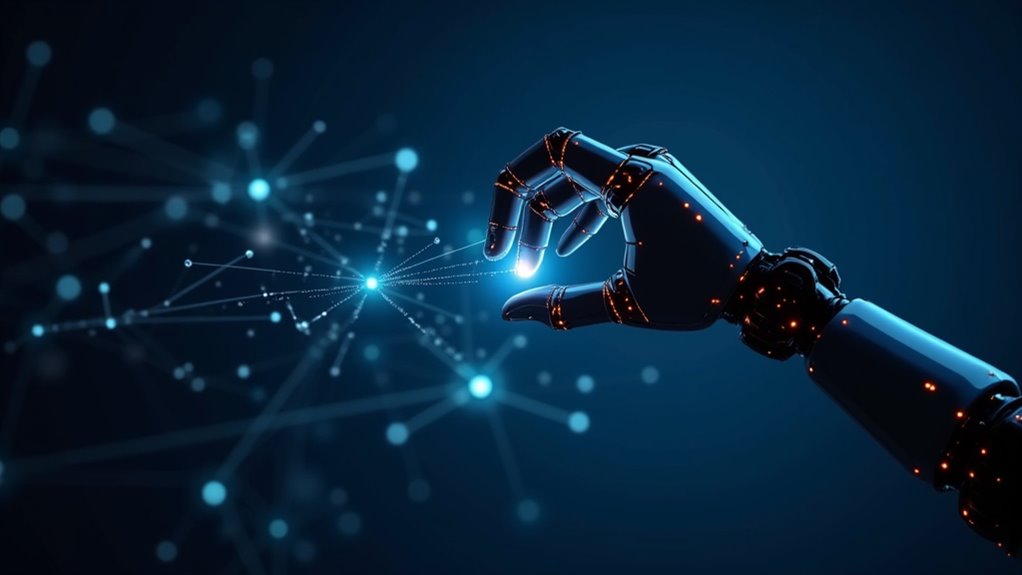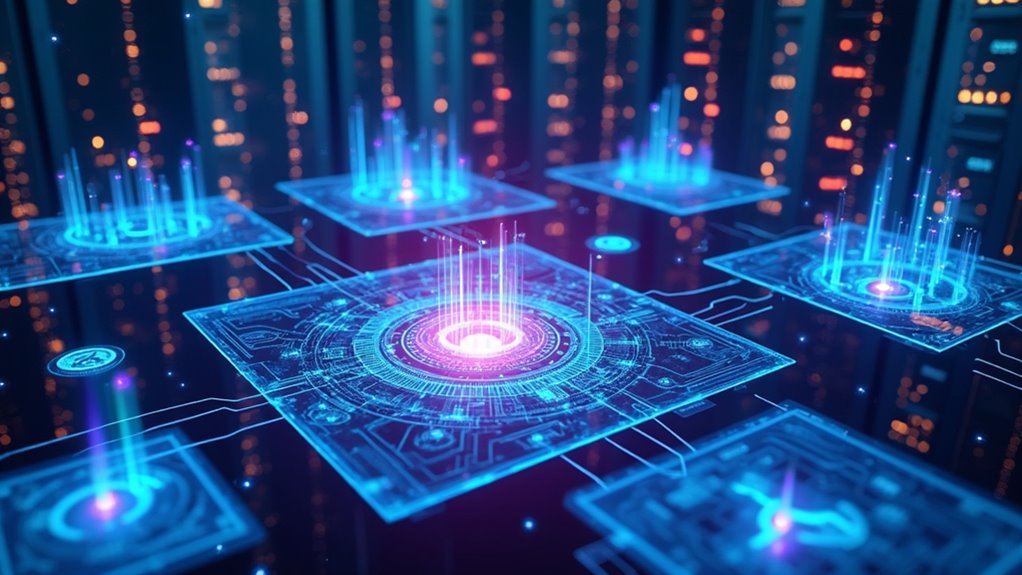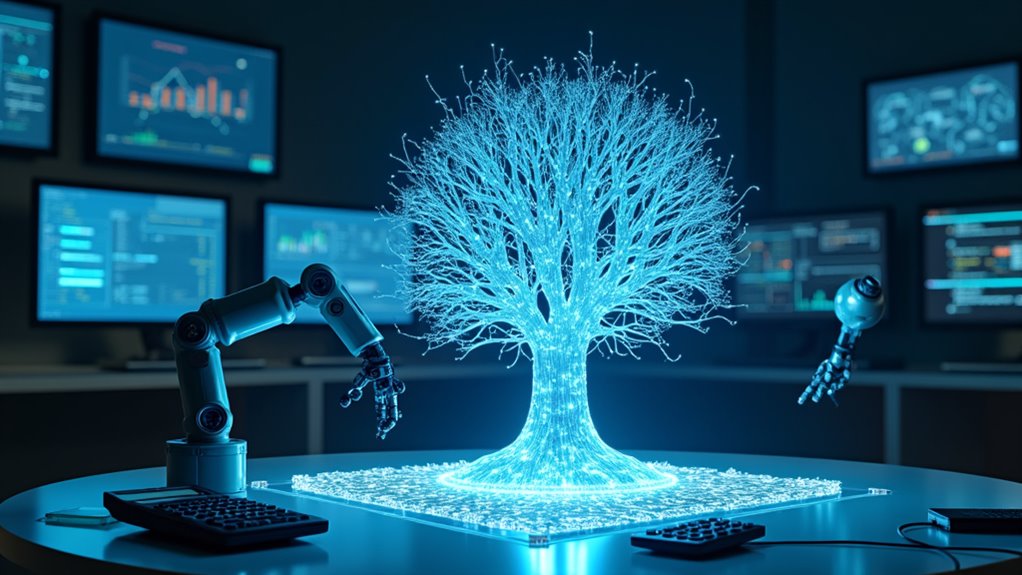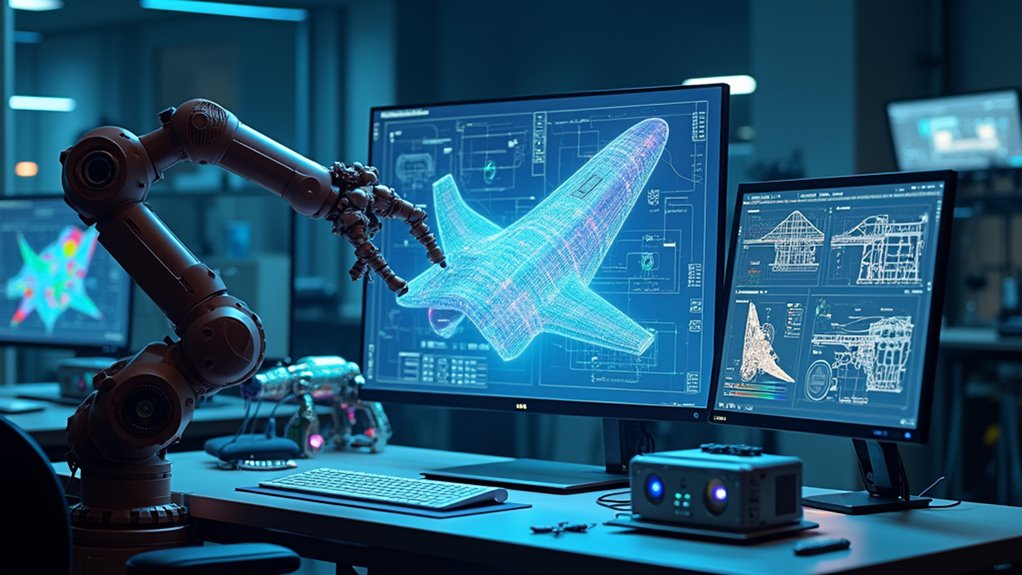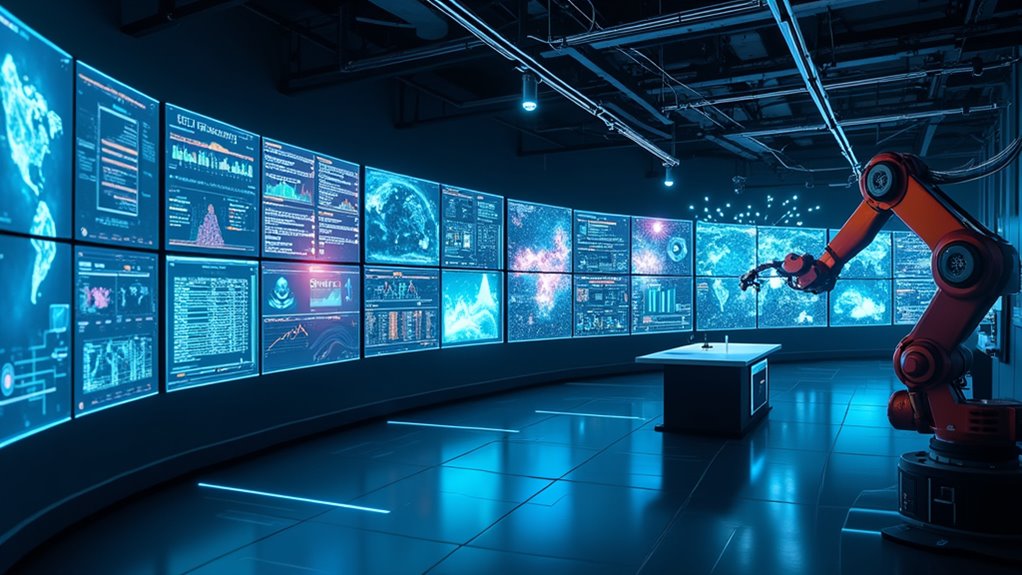Artificial intelligence packs serious punch with its self-learning capabilities—no explicit programming required. AI excels at problem-solving, task automation, and data analysis that would make your brain hurt. Its machine learning identifies patterns while neural networks (inspired by your own brain) tackle complex tasks. These systems power everything from the virtual assistant answering your questions to healthcare diagnostics predicting your problems. What starts as narrow AI handling specific tasks is evolving toward systems with broader capabilities that might surprise you.
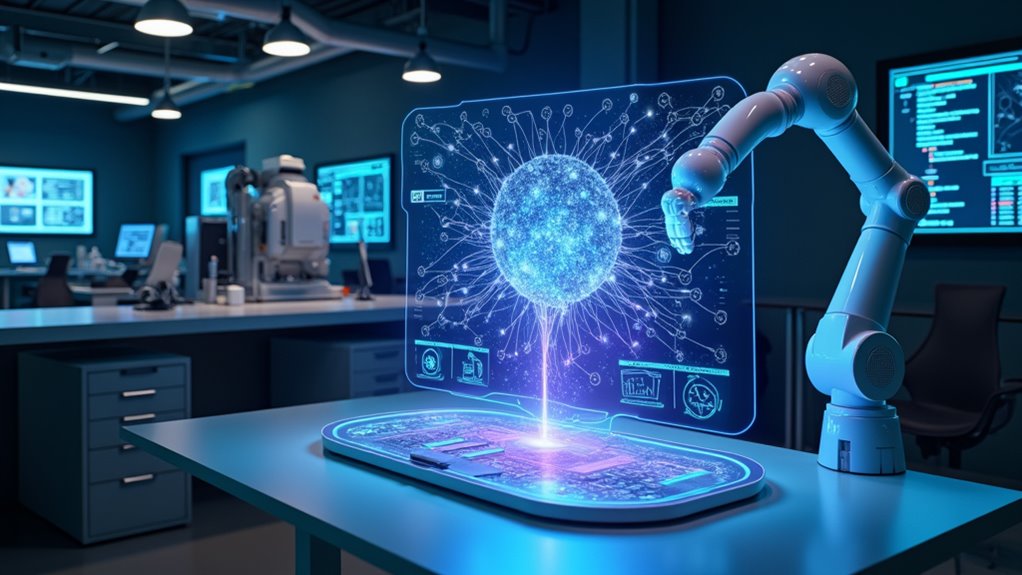
Revolution—that’s what artificial intelligence represents in our increasingly digital world. AI systems employ sophisticated learning algorithms that enable them to acquire knowledge from vast datasets, improving their performance over time without explicit programming. These systems excel at decision making through logical rules that analyze patterns and draw conclusions.
Revolution—AI transforms our digital landscape through autonomous learning and pattern-based decision making.
When confronted with challenges, AI’s problem-solving capabilities manipulate data strategically, creating solutions that might elude human analysis. Task automation, perhaps AI’s most visible benefit, handles repetitive processes that once consumed countless human work hours. Ever wonder how Netflix knows what you’ll want to watch next? That’s AI-powered data analysis working behind the scenes.
Machine learning, a critical AI subset, allows systems to identify patterns without being explicitly programmed for each scenario. This technology powers predictive maintenance in manufacturing, where equipment failures are anticipated before they occur, saving companies millions in downtime costs.
Natural language processing enables machines to understand human speech and text, making virtual assistants like Alexa possible. While impressive in many ways, current AI still struggles with common sense reasoning that humans take for granted. AI applications have seamlessly integrated into everyday life. Smart home devices now adjust temperatures and manage security with minimal human intervention.
Entertainment platforms use AI to personalize content recommendations, making your viewing suggestions eerily accurate. In transportation, AI optimizes traffic flow and routing, while healthcare systems leverage it for more precise disease diagnosis. Self-driving vehicles rely on AI perception to recognize roads and obstacles while navigating complex environments.
Behind these applications lie impressive technological foundations. Neural networks, inspired by the human brain, comprise layered algorithms that recognize increasingly complex patterns. Deep learning pushes these capabilities further, tackling tasks once thought impossible for machines.
Financial services deploy AI chatbots for customer service, while marketing teams use it to craft targeted campaigns based on consumer behavior. Despite these advances, today’s systems remain examples of narrow AI—designed for specific tasks rather than possessing general intelligence. Although narrow AI excels at specific tasks with incredible accuracy, researchers continue to work toward strong AI that would demonstrate human-like understanding and learning across domains.
As AI continues evolving, its features will certainly expand, reshaping how we interact with technology.
Frequently Asked Questions
How Is AI Different From Traditional Computer Programming?
AI differs fundamentally from traditional programming through machine learning capabilities.
While conventional programs follow predefined instructions with predictable code execution paths, AI systems learn from data and improve over time.
Traditional programming requires explicit human-written rules for every scenario—rigid and limited.
AI, however, identifies patterns independently, making decisions without step-by-step human coding.
This self-improvement mechanism allows AI to handle complex, unpredictable tasks that would require impossibly detailed traditional programming to accomplish the same results.
Can AI Develop Consciousness or Self-Awareness?
The machine consciousness debate remains contentious among experts.
Current AI systems lack true self-awareness despite impressive capabilities. They process information without subjective experience—no feelings, no inner life.
While some researchers believe consciousness could emerge from increasingly complex systems, others argue it requires biological substrates humans possess.
The path to conscious AI isn’t clear, and we might not recognize it if it happens.
For now, AI remains fundamentally unconscious—just really good at faking it.
What Jobs Are Most Vulnerable to AI Replacement?
Jobs most vulnerable to AI replacement are those with repetitive, predictable tasks.
Customer service positions face high risk, with chatbots potentially handling 95% of interactions by 2025.
Manufacturing jobs aren’t safe either—robots could replace 20 million positions by 2030.
Data entry clerks, bookkeepers, and retail salespeople should be worried too.
Even some creative roles like basic content writing and translation aren’t immune.
The pattern? If your job lacks complex human skills, AI’s coming for it.
How Do Ethical Guidelines for AI Development Vary Globally?
Ethical guidelines for AI development vary greatly across regions.
Western frameworks emphasize individual rights and transparency, while Asian approaches often prioritize collective good.
Global regulations range from the EU’s strict GDPR-style oversight to America’s more hands-off, industry-led standards.
Developing nations frequently balance economic advancement with ethical adoption.
These ethical frameworks continue evolving as AI capabilities expand, with UNESCO providing foundational principles that many countries adapt to their cultural and legal contexts.
What Cybersecurity Risks Are Associated With AI Systems?
AI systems face numerous cybersecurity risks. Threat actors exploit these technologies to launch sophisticated attacks, while the systems themselves remain vulnerable to data breaches and malicious manipulation.
Organizations must contend with algorithmic biases that can compromise decision-making processes. Additionally, AI-powered deepfakes, automated malware generation, and adversarial attacks present evolving threats.
Hardware vulnerabilities and compliance challenges further complicate security postures. Remember, your shiny new AI assistant isn’t just a productivity tool—it’s potentially a backdoor to your sensitive data.
